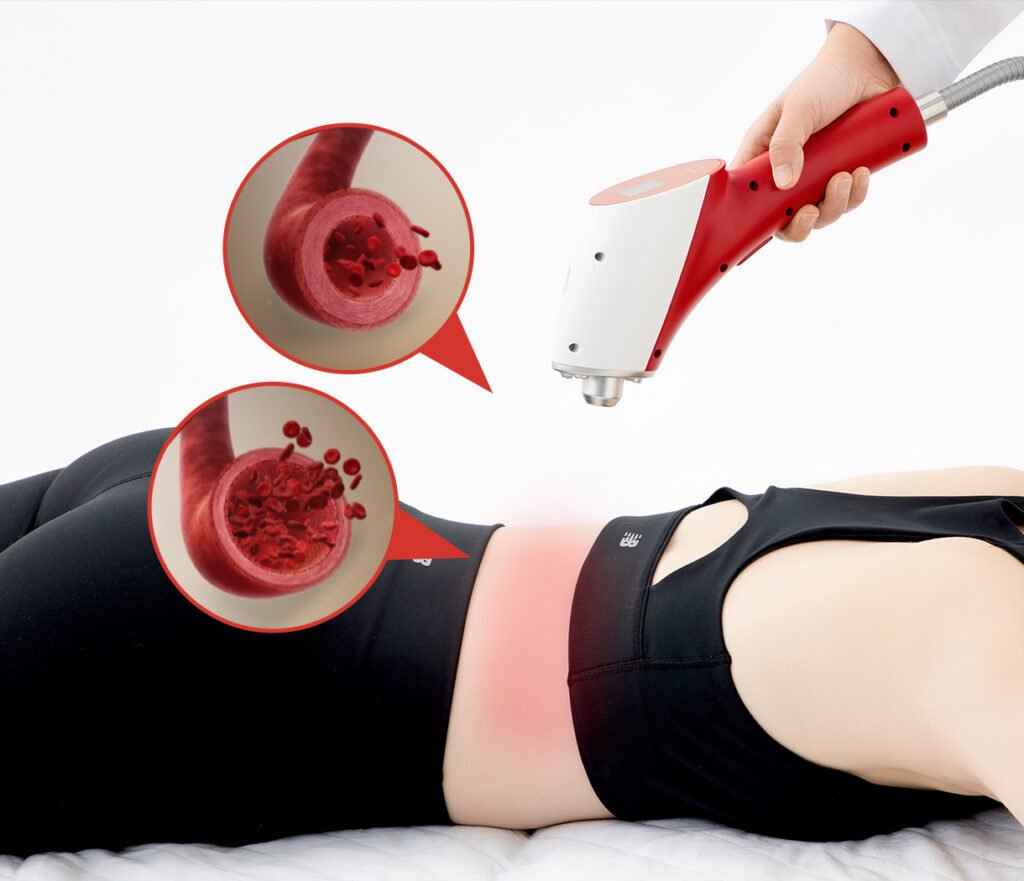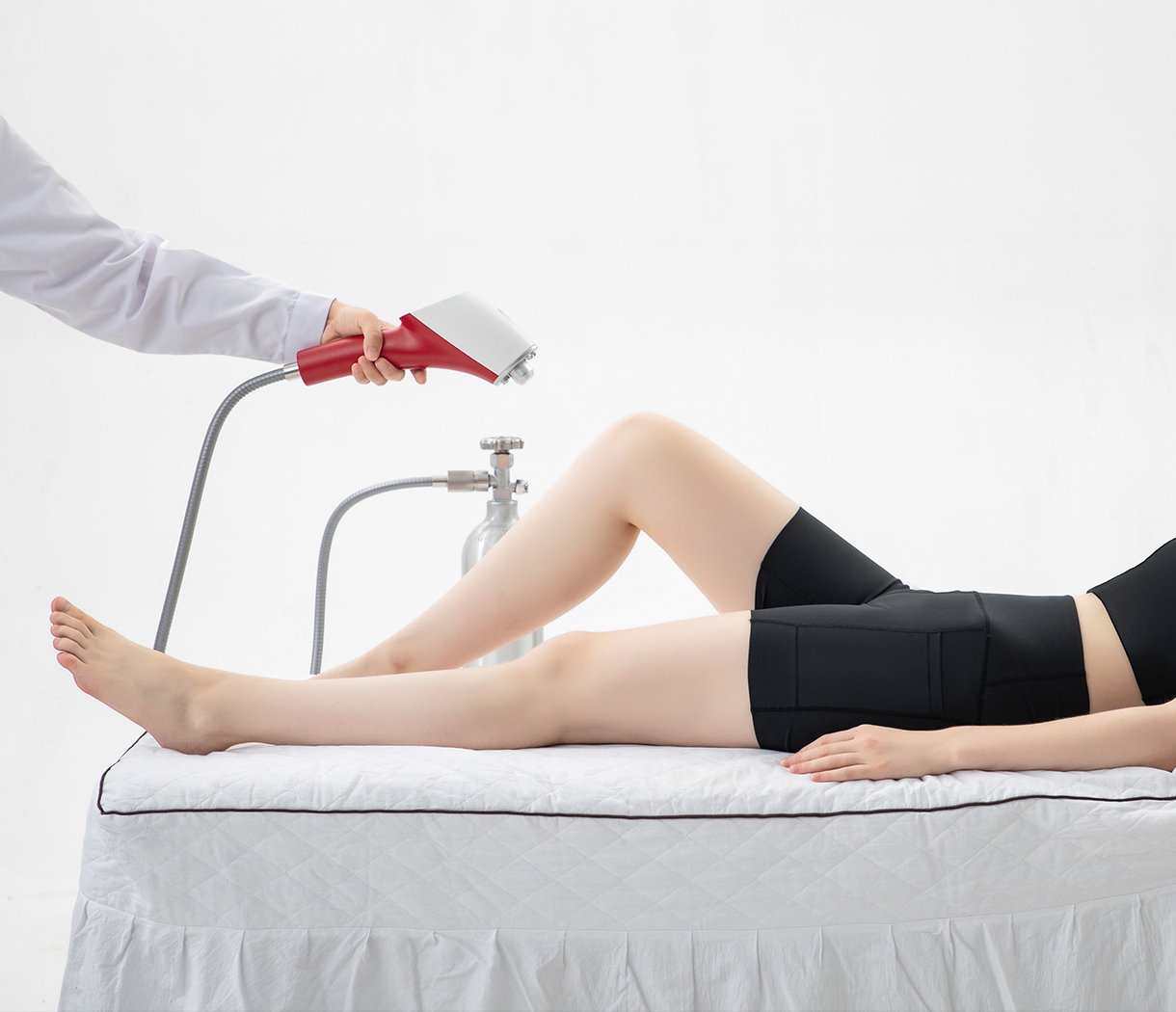Introduction to CO₂ Cryotherapy
Cryotherapy, the therapeutic application of cold temperatures, has been utilized for centuries to treat various medical conditions. Among its modern iterations, cryotherapy has emerged as a sophisticated and effective method, leveraging the unique properties of high-pressure liquid carbon dioxide to deliver precise and controlled cooling. Unlike traditional nitrogen-based cryotherapy, which operates at an extreme temperature of -196°C, CO₂ cryotherapy functions at a milder -78°C. This makes it safer for localized treatments while maintaining therapeutic efficacy.
Mechanism of Action
CO₂ cryotherapy induces a biphasic vascular response: initial vasoconstriction reduces blood flow to the treated area, minimizing swelling and inflammation. This is followed by vasodilation, which enhances blood circulation and nutrient delivery to the tissues, promoting healing. The cooling effect also slows metabolic activity, reduces nerve conduction velocity, and inhibits nociceptive signaling, providing significant pain relief. Compared to whole-body cryotherapy, which exposes the entire body to extreme cold, CO₂ cryotherapy targets specific areas, reducing systemic risks while maximizing localized benefits.
Historical Development
The use of cold therapy dates back to ancient civilizations, where ice and cold water were applied to treat injuries and inflammation. Modern cryotherapy began in the 19th century with the advent of liquid nitrogen for dermatological applications, such as wart removal. The development of precision CO₂ cryotherapy devices in the late 20th century marked a significant advancement, enabling its use in sports medicine, rehabilitation, and aesthetic medicine. Today, CO₂ cryotherapy is a cornerstone of non-invasive therapeutic interventions.
Clinical and Commercial Significance
CO₂ cryotherapy is now widely integrated into healthcare and wellness industries. Its applications span pain management, sports recovery, dermatology, and anti-aging treatments. The global cryotherapy market, valued at $4.5 billion in 2022, is projected to grow at a CAGR of 10.2% from 2023 to 2030, driven by increasing demand for non-invasive therapies and technological innovations.
Mechanisms and Physiological Effects of CO₂ Cryotherapy
Immediate and Long-Term Physiological Responses
When CO₂ cryotherapy is applied, the skin’s surface temperature drops rapidly, typically by 10-15°C within minutes. This triggers vasoconstriction, reducing blood flow to the area and decreasing swelling and inflammation. Once the cooling ceases, vasodilation occurs, flooding the tissue with oxygen-rich blood, which accelerates healing. Studies have shown that these effects can last up to 4-6 hours post-treatment.
Cellular and Biochemical Impact
CO₂ cryotherapy activates cold shock proteins (CSPs), such as RNA-binding motif protein 3 (RBM3) and cold-inducible RNA-binding protein (CIRP), which play crucial roles in cellular repair and anti-inflammatory responses. Research indicates that these proteins can reduce levels of inflammatory cytokines like IL-6 and TNF-α by up to 30-40%. Additionally, the therapy regulates oxidative stress by neutralizing free radicals, protecting mitochondrial function, and promoting tissue regeneration.
Tissue Penetration and Thermal Dynamics
One of the unique advantages of CO₂ cryotherapy is its ability to penetrate deeper tissues compared to conventional icing methods. While traditional ice packs cool only the surface, CO₂ cryotherapy can reach depths of 2-4 mm, making it more effective for treating muscle injuries and joint pain. This deeper penetration also enhances the cryo-adaptive response, where repeated exposure leads to long-term metabolic adaptations, improving tissue resilience and recovery capacity.

Clinical Applications of CO₂ Cryotherapy
Pain and Inflammation Management
CO₂ cryotherapy is highly effective in managing both acute and chronic pain. For example, a 2022 study published in the Journal of Pain Research found that cryotherapy reduced pain scores by 50% in patients with osteoarthritis. The therapy also decreases prostaglandin synthesis, a key mediator of inflammation, providing relief for conditions like rheumatoid arthritis.
Sports Medicine and Recovery
Athletes and fitness enthusiasts benefit significantly from cryotherapy. It accelerates lactic acid clearance, reducing delayed onset muscle soreness (DOMS) by up to 40%. A 2021 study involving professional athletes demonstrated that regular CO₂ cryotherapy sessions improved recovery times by 25-30%, enhancing overall performance.
Dermatology and Aesthetic Medicine
In dermatology, CO₂ cryotherapy is used to treat acne, hyperpigmentation, and warts. It also promotes collagen production, leading to skin tightening and wrinkle reduction. Clinical trials have shown a 20-30% improvement in skin elasticity after just 4-6 sessions.
Neurological and Systemic Applications
Emerging research suggests that CO₂ cryotherapy may benefit patients with neuropathic pain and fibromyalgia. By modulating pain pathways in the central nervous system, it provides long-term relief for nerve-related conditions. Early studies also explore its potential in managing neurodegenerative diseases like multiple sclerosis and Parkinson’s.
Safety, Risks, and Regulatory Considerations
Safety Protocols and Contraindications
While CO₂ cryotherapy is generally safe, adherence to guidelines is crucial. Recommended exposure time is 10-15 seconds, depending on the treatment area. Patients with cardiovascular conditions, Raynaud’s disease, or cold sensitivities should avoid the therapy.
Potential Risks and Side Effects
The most common risks include cold burns and frostbite, which can be mitigated by using properly calibrated devices and monitoring skin response. Long-term effects remain under investigation, with ongoing studies evaluating cumulative exposure risks and impacts on immune function.
Regulatory and Ethical Concerns
CO₂ cryotherapy devices must comply with FDA and EU regulations, ensuring safety and efficacy. However, the lack of long-term efficacy studies raises ethical concerns about overuse in consumer wellness trends.
Introducing Our Product: Advanced CO₂ Cryotherapy Machines
Introducing our state-of-the-art CO₂ Cryotherapy Machines from Local Cryotherapy, designed for both clinical and consumer use. These advanced devices feature:
- Precision temperature control with a -78°C CO2 gas application
- AI-assisted monitoring for personalized treatment
- Ergonomic design for easy, efficient use
- Real-time temperature display
- Compact and portable (6.5 kg) with a 3400mAh rechargeable battery
Ideal for quick pain relief, faster recovery, and muscle relaxation, these machines are perfect for treating conditions like muscle soreness, arthritis, and sports injuries. For more information, visit Local Cryotherapy.
Reference
1 https://journals.plos.org/plosntds/article?id=10.1371%2Fjournal.pntd.0012741&utm
3 https://www.mdpi.com/2306-5354/11/4/391?utm
4 https://link.springer.com/article/10.1007/s40122-020-00225-w?utm



